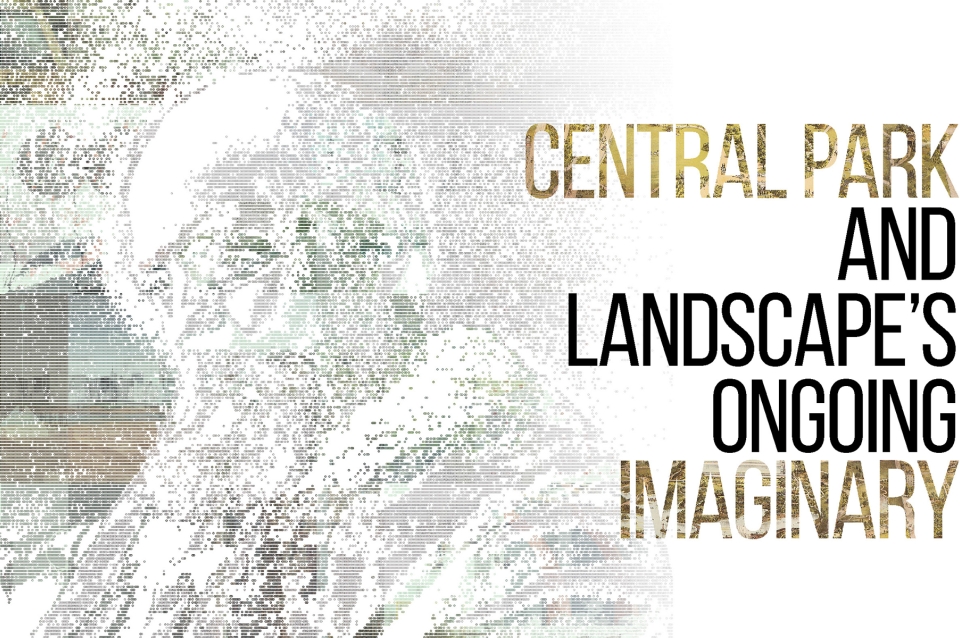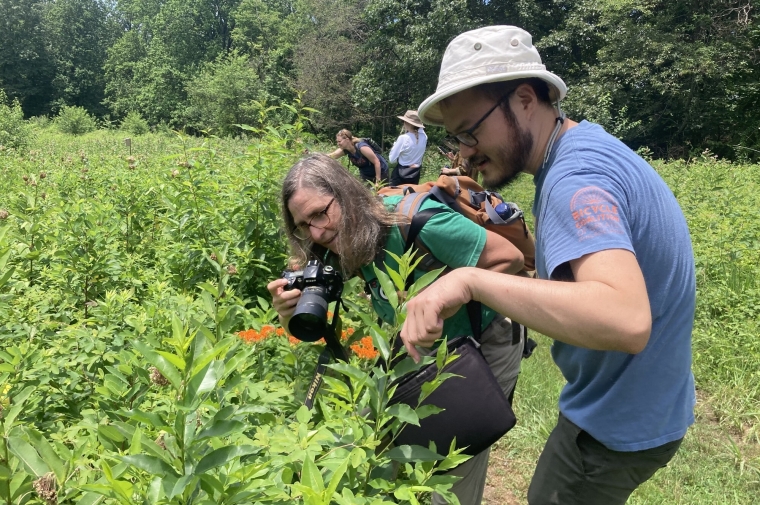November 6, 2019
Stuart Weitzman School of Design
102 Meyerson Hall
210 South 34th Street
Philadelphia, PA 19104
Get the latest Weitzman news in your Inbox
Media Contact
Michael Grant
mrgrant@design.upenn.edu
215.898.2539
The latest issue of LA+ , the Weitzman School’s award-winning interdisciplinary published by the Department of Landscape Architecture, documents the winners of last year's international competition to redesign New York's Central Park. In an essay excerpted here, “Central Park and Landscape’s Ongoing Imaginary,” Julia Czerniak explores the entries through the lens of Central Park design history. Czerniak is associate dean and professor of architecture at Syracuse University where she teaches studios as well as seminars on landscape theory and criticism. The full text is available, both in print and online, in LA+ ICONOCLAST (No. 10, Fall 2019).
One of the strongest arguments for financing, designing, building, and maintaining parks is for the services they provide to their urban hosts. These address significant global challenges which revolve around water (too much, too little, or in need of cleansing); waste (cleaning it up, reusing it); and diversity (social, cultural, biological).(1) By valuing water as a precious resource, restoring toxic lands, and engaging with species other than our own, contemporary parks not only address these challenges, they begin to change our perception about what urban parks look like, what they do, and how we value them. Additionally, not unlike public parks historically referred to as “pleasure grounds,” contemporary parks amuse and gratify. We go to parks for the space and activities they provide, the sensory and aesthetic experiences they enable, and even the lessons they teach. The sheer number of large parks being planned, designed, and built around the world today speaks to the importance of this landscape type, both in our physical environment and in our collective imagination.
In this context, the LA+ ICONOCLAST competition raises an important question—are the current roles of parks, well, enough? These examples beg our critique: Are they too safe? Too nice? Too ameliorative? Too didactic in their environmental messaging? Have we as a discipline and profession mainstreamed design to the point where we have sold out to the very structures of capital, governance, and social structure that Olmsted, in his own park, sought to critique and fight against? Is there more to park design than being responsible?
Over a decade ago, reflecting on the many important and influential international competitions such as Downsview Park Toronto and Freshkills Landfill to Landscape, I and others reflected on the vital roles large parks could play in the city.(2) As social catalysts, parks promise contact and exchange for people in otherwise disjointed urban environments; as ecological agents they, in diverse ways, enable life through ecological investment locally and across the larger horizontal urban field. Most relevant here is a third, more speculative, role: parks are places to project futures. Parks can be, what historian Galen Cranz argues, “places for imagination to extend new relationships and sets of possibility.”(3)
The winning schemes presented in LA+ ICONOCLAST respond, in fresh and suggestive ways, to a brief that calls for a “new, 21st-century park.” Some are advocational in the way they position park users to “stand up for biomes, ecosystems, species, and individuals” and against everything that threatens them. Others have broad social agendas understood through their strategies to democratize Manhattan’s open space through decentralization, thereby extending public access to the riches of greenery. Still others appear to be their own form of “radical environmentalism.” By obfuscating conventional occupation (of traditional views with cloud vapor) this winning scheme takes power away from developers and architects and puts it in the hands of environmental phenomena. Finally, others leverage the park’s land in order to generate revenue and build other green spaces in park-poor communities across the region.
Like competition schemes before them, this work puts imaginary landscapes into the world. Some seem destined to stay just that––imaginary—saddled with logistics that seem impossible to overcome. The influence, and power, of these schemes need not be any less significant, however, than their realized counterparts. One need only remember the Tree City and Lifescape schemes, winners of the Downsview Park and Fresh Kills competitions, respectively, to appreciate their potential influence. Although failing to be realized as envisioned, these two landscape visions have succeeded in almost single-handedly mainstreaming interest in performance-oriented concerns.
This point about the power of the purposefully imaginary is not academic. Landscape’s ongoing imaginary work fuels growth and change within the discipline and the profession. If Google’s Ngram is any indication, the need for the imaginary as a spur to growth and change is at risk. This online search engine, which generates word-use graphs over time, shows that in 1800 (the opening of the century in which the idea of the public park gained currency in this country), the use of the word “imaginary” was at its height. Since then, it has been steadily decreasing. In contrast, use of the word “landscape” has profoundly expanded into the 21st century. Can imaginary landscapes survive this trend?
Competitions such as this one give me hope. After all, Olmsted was an iconoclast – a nonconformist, a rebel, a questioner, an innovator. I want to believe that these talented and visionary designers are too.
References
(1) An expanded version of these trends was presented in my keynote address “Large Parks Trending,” in Large Parks in Large Cities, Museum of Natural History, Stockholm, sponsored by the World Wildlife Fund, September 2015.
(2) See, Julia Czerniak, “Legibility and Resilience,” in Large Parks (New York: Princeton Architectural Press, 2007), 214–51; and CASE: Downsview Park Toronto (Cambridge, MA: Harvard University Graduate School of Design, and New York: Prestel, 2001).
(3) Galen Cranz, The Politics of Park Design: A History of Urban Parks in America (Cambridge, MA: MIT Press, 1982), 240.


 Expand Image
Expand Image

